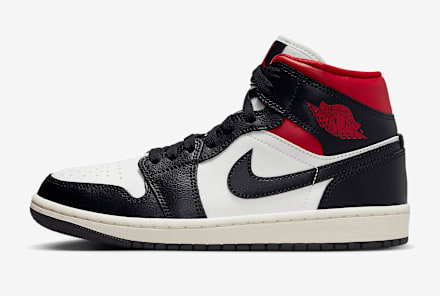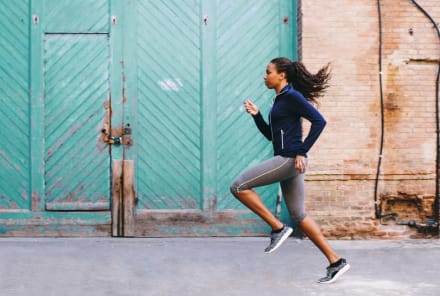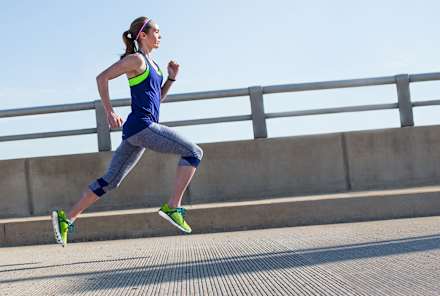Advertisement

SPF is an acronym we all use when referring to sunscreen but don't always completely understand. If you're not careful, a high SPF can lure you into a false sense of security against the ultraviolet rays of the sun.
More than 5 million cases of skin cancer are diagnosed each year in the United States—more than all other cancers combined. Currently, one in five Americans will develop some form of it by the time they hit 70. The most common (but least lethal) form of skin cancer is basal cell carcinoma. Squamous cell carcinoma is four times less common than basal cell but causes five times as many deaths per year. And melanoma, the big bad wolf of skin cancer, is the least common (1 percent of all skin cancers) but causes the majority of skin cancer deaths—approximately one American per hour dies of melanoma.
Here's all you need to know to make an informed decision when it comes to sunscreen protection for yourself and your family.
What does SPF even mean?
Most of us think of SPF as "sun protection factor," the degree to which a product protects our skin from the sun. But the FDA refers to SPF as "sunburn protection factor"—a more accurate term. When the SPF rating system was developed in the 1960s, it was a measure of how long a product could delay reddening of the skin due to sun exposure. If normal skin would start to redden after 10 minutes in the sun, a product that could extend that time to 150 minutes would have an SPF of 15. The FDA summarizes it as follows1:
All sunscreens must be tested according to an SPF test procedure... Higher SPF values (up to 50) provide greater sunburn protection. Because SPF values are determined from a test that measures protection against sunburn caused by ultraviolet B (UVB) radiation, SPF values only indicate a sunscreen's UVB protection.
Additionally, a sunscreen can be tested after 40 or 80 minutes underwater to make a water-resistance claim. And in order to make a "broad spectrum" claim, a sunscreen also has to undergo a pass/fail test for protection from UVA rays.

What's the difference between UVA and UVB rays?
UVB rays cause sunburn; think B for burn. It’s those severe, childhood sunburns that can cause melanoma many years down the line. UVB light also contributes to basal and squamous cell carcinomas. UVB rays are most prevalent between 10 a.m. and 4 p.m. and do not penetrate glass (car windows, for example) to a significant degree. As explained above, the SPF rating system is based solely on UVB exposure.
UVA is far more prevalent and penetrates more deeply into the dermal layer. It is present any time there is daylight and can penetrate glass. It causes squamous cell carcinoma and contributes to basal cell carcinoma. UVA light causes photo-aging by damaging collagen and causes immune suppression, possibly making it easier for skin cancer and other cancers to gain ground.
The sun also emits UVC rays, but they are filtered out by the earth’s atmosphere, as long as we have an ozone layer.
How high of an SPF should I use?
This is one of the most confusing aspects of the SPF system. Most people believe that an SPF 30 product offers twice the sun protection of an SPF 15 product, and that would make a lot of sense. In reality, though, an SPF of 15 blocks 93 percent of the UVB rays, whereas an SPF 30 blocks 97 percent, making the SPF 30 product only 4 percent more effective at blocking UVB rays. Bump your SPF to 50, and you’re only getting 1 percent more protection by blocking 98 percent of UVB radiation. In short, choose an SPF of at least 15, and don’t fall for the SPF 100 trick—you never need more than a 50.
How you use a product, along with its UVA coverage and active ingredients, is far more important than its SPF number.
Which active ingredients should I choose, and which should I avoid?
Steer clear of:
Try to avoid the sunscreen ingredients oxybenzone and octinoxate. They are significant skin allergens and have been shown to have some estrogen-mimicking effects on the body2. Also watch for a "non-active" ingredient called methylisothiazolinone—a common preservative in sunscreens and baby wipes that was named "allergen of the year" by the American Contact Dermatitis Society in 2013.

Instead, go with:
Zinc oxide is the superstar of the sun protection world. It protects against UVA and UVB rays and does not get absorbed by the skin. Instead, it sits on top and deflects the sun's rays like a mirror would.
Titanium dioxide is another barrier sunscreen but is mainly active against UVB rays. Avobenzone is one of few ingredients approved in the United States for UVA protection and has a low toxicity profile. Mexoryl is another UVA screen with a similar profile, currently awaiting FDA approval.
Here are a few of my personal favorite sun protection products that have some of these goodies:
How often should I apply sunscreen?
The magic number is 1 ounce—a full shot glass—per full-body application, every two hours. That’s a LOT of sunscreen! This method of application is especially true if you’re using chemical sunscreens, as they break down much more quickly than mineral sunblock with zinc oxide does. Even with mineral sunscreen, you will need to reapply after swimming, sweating excessively, or drying off with a towel.
What are some other ways to protect my skin from the sun?
The two simplest and most effective ways to limit sun damage are to wear more clothes and stay out of the sun between 10 a.m. and 4 p.m., when its rays are most perpendicular to the earth.
UPF clothing is an incredible way to protect your skin from both UVA and UVB radiation. The UPF rating system is more reliable than the SPF system, so if it says UPF 50, you’re blocking out at least 98 percent of the sun’s damaging rays. If UPF clothing is not in the budget, look for tightly woven cotton, which also has a UPF close to 50.
And remember that the amount of solar exposure is more important than the number of minutes spent in the sun: One hour on a mountain in sunny Colorado is far more impactful than an hour at sea level on an overcast day.
Skin cancer is an almost entirely preventable disease. So it’s time to get educated, share your knowledge, and take action to keep yourself and your loved ones safe from the sun.
Certain chemical sunscreens are awful for the environment, too. Here's the lowdown on why Hawaii just banned some of them from its beaches.
Watch Next
Enjoy some of our favorite clips from classes
Enjoy some of our favorite clips from classes
What Is Meditation?
Mindfulness/Spirituality | Light Watkins
Box Breathing
Mindfulness/Spirituality | Gwen Dittmar
What Breathwork Can Address
Mindfulness/Spirituality | Gwen Dittmar
The 8 Limbs of Yoga - What is Asana?
Yoga | Caley Alyssa
Two Standing Postures to Open Up Tight Hips
Yoga | Caley Alyssa
How Plants Can Optimize Athletic Performance
Nutrition | Rich Roll
What to Eat Before a Workout
Nutrition | Rich Roll
How Ayurveda Helps Us Navigate Modern Life
Nutrition | Sahara Rose
Messages About Love & Relationships
Love & Relationships | Esther Perel
Love Languages
Love & Relationships | Esther Perel


















